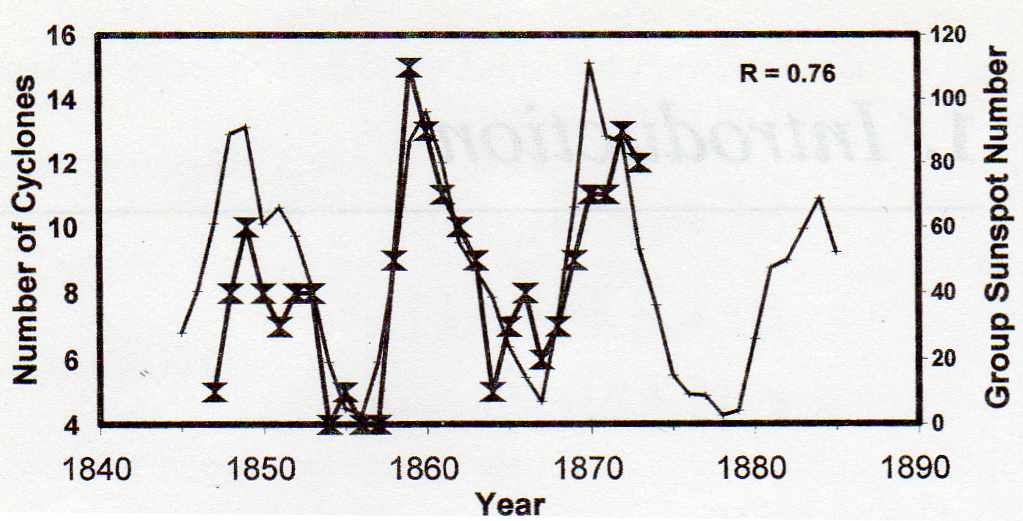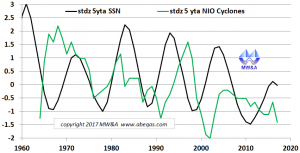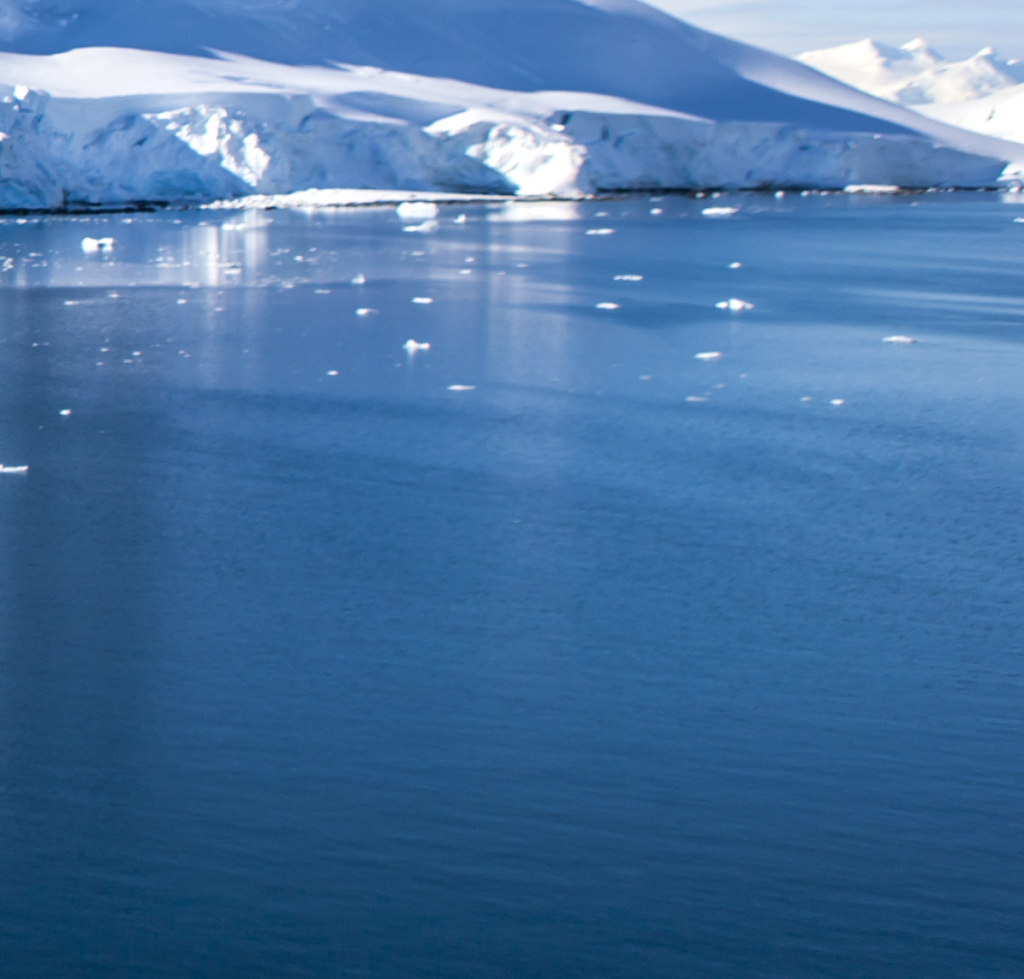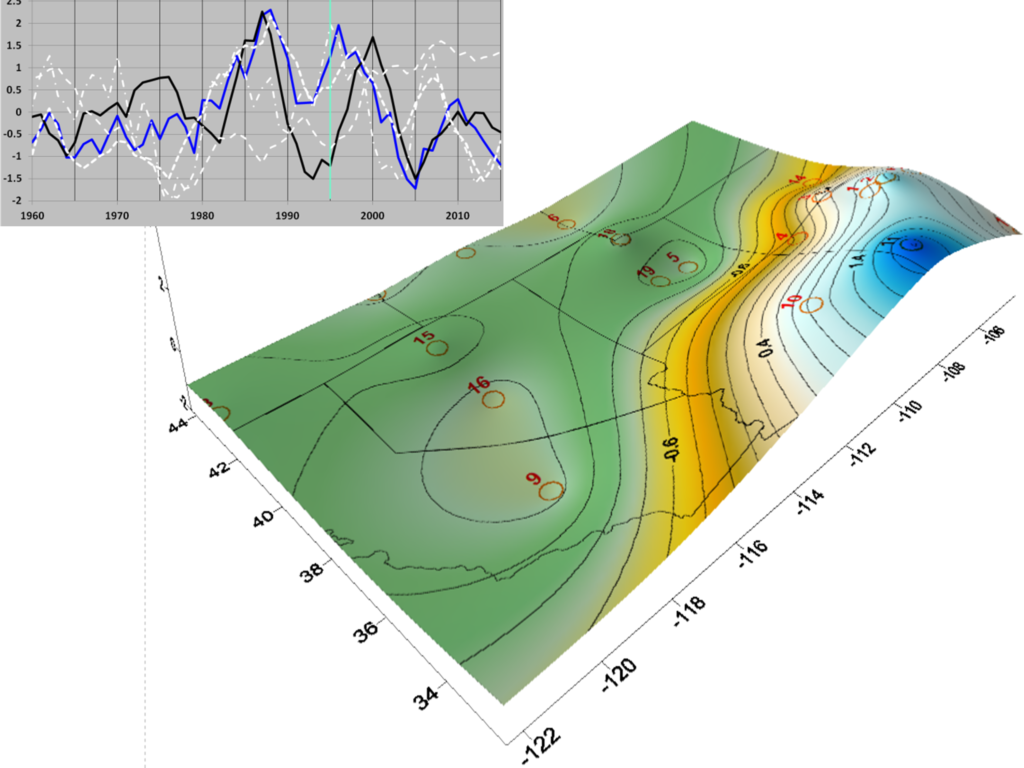
Solar Based Forecasting of Cyclones in the Indian Ocean
In 1997 Hoyt and Schatten [1] wrote a book on THE ROLE OF THE SUN IN CLIMATE CHANGE, which explored in large part the history of scientists’ discovery of sunspots and their subsequent attempts to understand how the nearly clockwork sunspot cycles might relate to our climate. The featured image is a reproduction from their volume regarding such a connection that was originally explored by C. Meldrum in the late 19th century. The chart shows a compelling but incomplete pairing of the solar cycle sunspot time series to the annual frequency of recorded cyclones in the Indian Ocean. As related by Hoyt and Schatten, “This striking relationship inspired many follow-up studies, as well as the first wave of sun-climate investigations”.
The authors further relate that for reasons which remain unknown, the connections appeared to fade away, or at least, go out of phase over time. Solar scientists were naturally among the first to recognize that these correlations were drifting out of view, and accordingly they worked hard to reduce both epistemic and aleatory uncertainties. There were some subsequent correlations found but often they related to remote aspects of the upper atmosphere or elaborately compiled connections that even if perhaps correct, failed to capture the imagination as the Meldrum discovery did.
My imagination has been captured I must admit by similar correlations to those found by Meldrum. I point to a few in several past posts. I’ve also completed a paper [3] that in part revisits Hoyt and Schatten, in relation to my unorthodox understanding of global Hadley and Walker circulations. With that in mind, I began taking a look at more recent records of Northern Indian Ocean (NIO) cyclone frequencies. The string of tallies is incomplete as shown in the figure below, but the patterns exhibit consistency with the conceptual approach to solar induced climate that I continue to explore.
I have learned a great deal from the Hoyt and Schatten book, but many of the mysteries of solar climate connections remain to be solved. Yet this happens to be the case for climate in general, and the need to continue investigating has not prevented climate scientists, hydrologists, and meteorologists from routine forecasting.
Accordingly, given our track record we will also now offer custom forecasting of Indian Ocean climate parameters including cyclone frequencies with annual to sub-decadal lead times. My guess is that our accuracy will be much better than that of competitors who attempt the same thing using global circulation models. A future post will follow up to explore the accuracy of our training forecasts of Indian cyclones and to compare in context to relevant cyclone forecast results such as those by Dr. Judith Curry and others.
[1] Hoyt, D.V. and K.H. Schatten, THE ROLE OF THE SUN IN CLIMATE CHANGE Oxford
University Press (1997)
[2a] Meldrum, C., On a periodicity in the frequency of cyclones of the Indian Ocean south of the
equator. Nature, 6, 357-358 (1872)
[2b] Meldrum, C., On a periodicity in the frequency of cyclones of the Indian Ocean south of the
equator. British Association Report 56-58 (1872)
[2c] Meldrum, C. On a supposed periodicity of the cyclones of the Indian Ocean south of the
equator. British Association Report, 925-926. (1885)
[3] Wallace, M. Application of newly identified solar-atmospheric connections towards improved forecasts of streamflows in the Western US. In review by a journal (2017)
cyclone tallies extracted from simple compilations found in Wikipedia.
copyright Michael Wallace 2017. Fair Use citation of featured image [1]
 5242total visits,2visits today
5242total visits,2visits today


